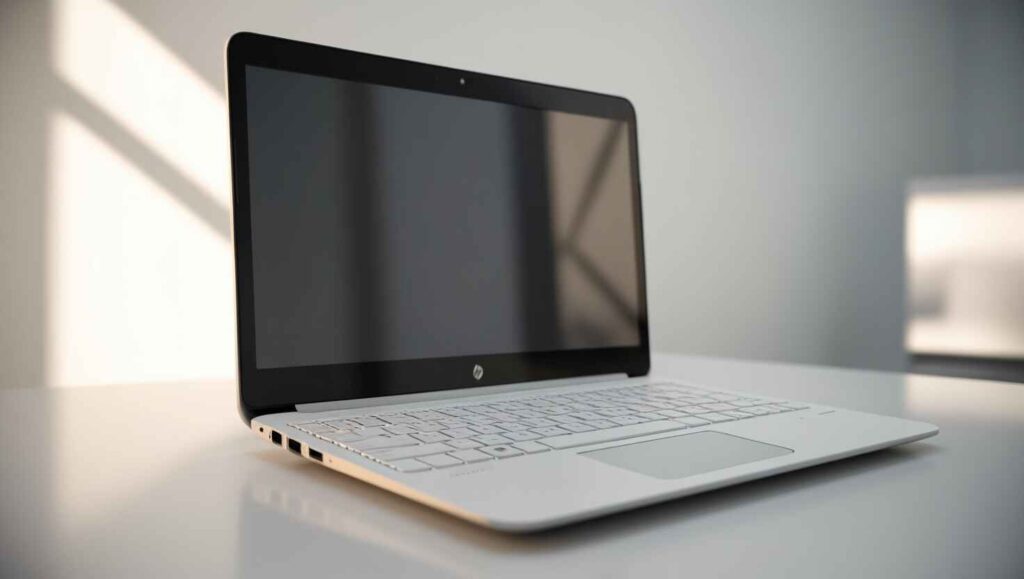Have you ever been working on your HP laptop, typing away, and then it suddenly stops working? Maybe you had keys that were not able to type or the keyboard is just completely out of order. This can be very frustrating. It is worse when you’re racing to finish your homework, play games, or catch up with friends. But do not worry! This is going to be a step-by-step guide on how to repair your HP laptop keyboard. We will use simple words, and explain everything clearly, so even kids can understand.
Why Is My HP Laptop Keyboard Not Working?
There are a couple of reasons why an HP laptop keyboard may stop working. Those are explained below:
Dust and Dirt: Just like dust makes your room dirty, dust can get under your keys and stop them from working.
Software Problems: Programs on your computer, like Windows, can develop minor issues. These can cause your keyboard to act strangely.
Driver Issues: A driver is an assistant. It allows your keyboard to work with the computer. When this assistant develops a problem, it might render your keyboard useless.
Hardware Damage: A defective keyboard may cause some keys to fail. In some cases, the whole keyboard may stop working.
Battery Issues: A faulty laptop battery can cause keyboard problems.

Easy Steps to Repair Your HP Laptop Keyboard
Since we have gone through a look at why this is happening with your keyboard, let’s move on with how to fix it. We will initiate our effort with the easiest steps first.
1. Restart Your Laptop
Think of restarting your laptop as putting it to sleep for a little while. And then, once it’s up again, everything works just fine. To restart your laptop:
Click the “Start” button.
Click “Power” and then “Restart.”
Wait until your laptop goes off and boots up again.
After it reboots, check whether your keyboard is functioning or not.
2. Check for Dust and Dirt
Dust is a small dirt that can fall under your keys and make them act funny. You can clean it out like this:
Shut your laptop off completely.
Tilt your laptop gently to the left and, with a soft brush or a can of compressed air, you can just blow it away from underneath the keys.
Be careful not to break anything in the process.
Now, having cleaned it, switch your laptop on again and see if it works better.
3. Update Your Keyboard Driver
There is something called a driver, a special program that lets your keyboard communicate with your laptop. But if it’s an outdated or damaged driver, the keyboard might not be able to work. To update your driver:
Press the “Windows” key and “X” simultaneously, then click on “Device Manager.”
In Device Manager, find “Keyboards” and click on it.
Right-click your keyboard’s name and select “Update driver.”
Follow the on-screen instructions that pop up afterward.
This will make sure your driver is up to date. After doing this, restart your keyboard.

4. Check Keyboard Settings
There are settings in your laptop that may impact your keyboard’s functionality. Sometimes, these get changed by accident. Here’s how you can check:
Click the “Start” button and type in “Settings” with the icon of a gear.
Go to “Ease of Access” then “Keyboard.”
Ensure that “Filter Keys” is off. “Filter Keys” can make your keyboard appear slow or not recognize all key presses.
After you have made these changes, test your keyboard again.

5. Test with an External Keyboard
The external keyboard is any other keyboard plugged in aside from your laptop keyboard. It also signifies a means to troubleshoot whether the problem is with your laptop’s keyboard or with something else. Here’s how to troubleshoot:
Plug the external keyboard into one of your laptop’s USB ports.
Try typing on the external keyboard.
If it does, then the problem is with your laptop’s built-in keyboard. If it doesn’t, then your laptop may be the problem.
6. Hard Reset
Hard Reset is just like giving your laptop a fresh start. It is somewhat more powerful than mere restarting. Here you go as to how you can do that:
Switch your laptop off completely.
Disconnect your laptop from the charger.
If it is a laptop with a removable battery, remove the battery. Otherwise, do nothing.
Press and hold the power button for about 15 seconds. This drains all remaining power from your laptop.
Put the battery back in its place, if removed, and plug your laptop back into the power.
Turn your laptop on and check if the keyboard works.
Further Advanced Steps to Repair Your Keyboard
In case the ease steps did not work, here are some more advanced things you can try.
7. Reinstall Keyboard Driver
If updating the driver didn’t help, this time, reinstalling it may. This implies that you remove the old one and let your laptop install a fresh one. Here is how you do it:
Go to “Device Manager” again using the “Windows” key and “X” and then click on “Device Manager.”
Again, locate “Keyboards,” and right-click on your keyboard’s name.
Click “Uninstall device.”
Restart your laptop. When you turn it back on, the driver for the keyboard should be installed automatically.

8. Check for Windows Updates
Sometimes, sorting any problem out calls for an update to your operating system. To update, follow these steps:
Under the “Start” menu, enter “Settings.”
Click on the “Update & Security” page, then click “Check for updates.”
If available, download and install any of these updates.
After updating, restart your laptop and check whether it will work.
9. Reset Your Laptop
Simply put, resetting your laptop just gives it a fresh start. This will erase everything on your laptop, so use this only if nothing else works. Here’s how to reset:
Go into “Settings” and then “Update & Security.”
Click on “Recovery” and then “Reset this PC.”
Choose whether you want to keep your files or remove everything.
Follow the on-screen instructions to restore your laptop.
10. See a Pro
In case, after going through all the above steps, your keyboard is still not working, then it is time to seek some help. Let a professional have a look at your laptop to diagnose the problem and fix the issue that may be something inside the laptop that is broken.
How Does a Broken Keyboard Affect Gaming?
Many people use HP laptops for playing video games because they work very fast and powerfully. However, when one doesn’t have a working keyboard, it is quite hard to play. Imagine playing any type of game that requires you to press keys quickly, but the keys just won’t work. That can make you lose the game, which is frustrating.
More and more people are gaming on laptops. The year 2023 is lucrative for the gaming laptop market. Most teens and young adults use gaming laptops to play games. This calls for an excellent keyboard for gaming. In this regard, it is very essential to maintain the keyboard.

Tips to Keep Your Keyboard in Good Working Condition
Following are some simple things you can do to keep your keyboard in order so that it keeps on functioning well:
Keep It Clean: Clean your keyboard regularly to avoid dust and dirt accumulating underneath the keys.
Press Keys Gently: Don’t whack the keys when you’re typing or gaming.
Avoid Spills: Keep food and drinks away from your laptop to avoid any spills.
Use a Keyboard Cover: This helps protect your keys from dust and spills.
Update Your Laptop Regularly: Make sure that software updates regarding your laptop are always up to date.
When your HP laptop keyboard stops working, it may get pretty frustrating; however, in most instances, this problem is quite easy to fix. Start with the basic steps: restart your laptop and clean the keyboard. If that doesn’t help, you can try updating or reinstalling the driver. If none of these works, you need to consult a professional.
A good keyboard is vital for homework, gaming, and chatting. So, keep it in good condition. Keep in mind that a clean, well-cared-for keyboard will keep you typing smoothly for a long time!
How to Avoid Problems with Your Keyboard in the Future
Now that you know how to fix a broken keyboard, let’s talk about how to prevent the problems in the first place from happening to the keyboard. Caring for your laptop keyboard will save you from frustration. Here’s how:
Clean your laptop regularly. Shake it to remove dust and crumbs from the keyboard. Or, use a soft brush and compressed air.
Use a Keyboard Cover: A keyboard cover is just a layer you place over your keys to protect them. This protects your keyboard from dust, dirt, and liquid spills that may fall on the keyboard. These are usually made of silicon and are easy to clean.
Be Gentle with Your Keys: Try not to hit the keys too hard. It does not matter if one is typing or gaming; gentle key-pressing goes a long way in the durability of the keyboard.
Avoid eating and drinking near your laptop. Spills can cause critical damage. Food may fall on your keyboard and make a mess. Try as much as possible not to eat or drink near your laptop; being around your laptop with something in your hand should be done with much care.
Keep Your Laptop in a Safe Place: In case you’re not using your laptop, keep it in a case or on a clean flat surface. This can save your keyboard from any probable accidents.

How to Use an Onscreen Keyboard if You Have a Temporary Solution
If your laptop keyboard is not working, then you might want to get on with work immediately. You can work temporarily with the help of an onscreen keyboard. Here is how you can access it:
Windows Onscreen Keyboard:
Click the “Start” button and go into “Settings.”
Click on “Ease of Access” and then click on “Keyboard.”
Enable the “On-Screen Keyboard” option.
The onscreen keyboard then would have appeared on your screen, after which you could type by clicking the keys with the mouse.
Accessibility Feature by HP: In many HP laptops, this is also started with a quick shortcut or even a dedicated button. And if you suspect that may just be your case, then looking into your laptop’s manual will do a great deal for you.
This virtual keyboard is a bit slower than a real one. But, it’s a good temporary fix until you can fix your keyboard.
Understanding the Impact of Keyboard Problems on Productivity
If your laptop keyboard isn’t working, then you are in for a big hit in terms of productivity. If you are doing homework, project work, or just casual web browsing, a broken keyboard slows everything down. Here’s why:
Key-typing delays: Sometimes keys don’t respond or type the wrong letters. This makes it harder to write things down. This can make the quick completion of certain tasks very hard, like typing up a report or chatting with friends.
Higher frustration rate: It is easy to get frustrated when things simply don’t work as they should. In return, frustration can reduce concentration, leading to mistakes.
Missed Deadlines: If, in the middle of an urgent task, your keyboard just stops working, you may not be able to complete it on time. Which, consequently, might lead to a failure to meet a deadline either at school or work.
Reduced Efficiency: This will slow you down. An on-screen keyboard or an external keyboard isn’t as fast or convenient as your laptop’s built-in keyboard.
How Gaming Laptops and their keyboards are built differently
Gaming laptops are designed to be hotspots of action, most especially on the keyboard. If one uses an HP for this purpose, the keyboards used are, as a matter of fact, a little bit different from the normal ones:
Durability: Gaming laptop keyboards are made to be more durable. The keys can withstand millions of presses. This is important as gamers often tap keys repeatedly at times in the game.
Anti-Ghosting: This feature lets you press multiple keys at once without missing any commands. It’s very important for those games that call for rapid and complicated key combinations.
Backlighting: Most gaming laptops have backlit keyboards. The keys light up. This helps the gamers view the keys much better, especially under dark conditions.
Key Travel Distance: Key travel refers to the distance that a key travels while being pressed. The keys in gaming laptops have more travel, hence they are easy to work on and can be used more comfortably over a longer period.
Customization: In some gaming laptops, you may customize your keys. You can design special functions or shortcuts by setting up keys that will give you an in-game advantage.

How to Know When It’s Time to Replace Your Laptop Keyboard
Sometimes, your keyboard can’t fix these problems. You may need a replacement or a new laptop. Here’s how you can tell:
If several keys are not working, the keyboard may be worn out. This is true if the problem persists after trying all the fixes.
Physical Damage: If your keyboard is damaged, like broken keys or cracked keycaps, and it affects your typing, you may need a replacement.
Frequent Malfunctions: If keyboards keep malfunctioning after repairs, they may need replacement.
Laptop’s Age: If your laptop is a few years old and its keyboard starts failing, it is cheaper to replace the laptop than to fix the keyboard.
Persistent Driver Problems: If reinstalling or updating the keyboard driver doesn’t help, the hardware may be failing.
When to Seek Professional Help
That’s great, trying to fix your keyboard yourself, but sometimes it’s best to just leave it to the pros. Here’s when you would want to take your laptop to a repair shop:
Complicated Issues: If the problem is too complex, like the wiring or motherboard, let a pro handle it.
Warranty Coverage: If your laptop is under warranty, call HP support or go to an authorized service center to keep it.
Lack of Tools: Some repairs require special tools that may not be available at home. A professional will have the right tools to fix the issue safely.
Risk of Further Damage: If you are not sure about how to fix the problem, then your trying might further damage it. Therefore, if this is an issue you don’t know well, seeking professional help is safer.
Reoccurring Problems: If the keyboard issue returns, a pro may better diagnose it.
A broken HP laptop keyboard can be a headache. But, with the right steps, one can fix or avoid it. This guide shows, through basic troubleshooting, how defects affect gaming and productivity. Proper keyboard care ensures a better laptop experience. If tricks are too complex, ask a pro for help. This keeps your laptop in top shape.
Extra topics to include for the HP Laptop Keyboard Not Working
1. Identifying Common Keyboard Issues
- Key Not Responding: Discuss reasons why certain keys might not work while others do.
- Key Sticking: Explain how keys might stick or become unresponsive due to dirt or damage.
- Multiple Keys Not Working: Address why several keys might fail simultaneously and what that indicates.

2. Checking for Physical Damage
- Inspect for Cracked or Loose Keys: How to check if any keys are physically damaged or loose.
- Screen and Laptop Body Damage: Assess whether the issue could be related to other physical damages to the laptop.
3. Using HP Diagnostics Tools
- HP Support Assistant: Guide on using HP’s built-in diagnostics tools to test keyboard functionality.
- Running Hardware Tests: Steps to run hardware diagnostics through HP’s built-in tools or BIOS.
4. Adjusting Keyboard Settings for Specific Needs
- Language and Input Settings: How wrong language settings or input methods can affect keyboard use.
- Sticky Keys and Other Accessibility Features: A summary of features that may impact keyboard performance.
5. Handling Software Conflicts
- Recently Installed Software: Conflicts between keyboard drivers and new software or updates.
- System Restore: Using system restore points to revert to a previous state where the keyboard was working.
6. Power Management Settings
- Battery Saving Modes: How power-saving settings may affect keyboard performance and how to adjust them.
- Power Options in Control Panel: Steps to check and adjust power settings for the keyboard and USB devices.
7. Checking BIOS settings
- Accessing BIOS: Enter the BIOS setup to check if the keyboard is recognized before the OS loads.
- BIOS Updates: Importance of keeping your BIOS updated and how to update it if necessary.
8. Repair vs. Replacement
- Cost Analysis: Comparing the cost of repairing the keyboard versus replacing it or the entire laptop.
- DIY Repair Kits: Availability and effectiveness of DIY repair kits for keyboard issues.
9. Preventive Measures
- Regular Maintenance Tips: Best practices for maintaining keyboard cleanliness and functionality.
- Using Laptop Stands: A laptop stand helps prevent spills and damage.
10. Warranty and Support
- Checking Warranty Status: How to check if your laptop is still under warranty and what repairs are covered.
- Contacting HP Support: Steps to contact HP support for warranty claims or professional repair services.
HP Laptop Keyboard Not Working? Quick Fixes and Tips
If your HP laptop keyboard stops working, it could be due to dust, software, drivers, hardware, or battery issues. Start by restarting your laptop, cleaning the keyboard, and checking for driver updates. Check the keyboard settings. Then, try an external keyboard to diagnose the issue.
If simple fixes don’t work, try these steps: 1. Reinstall the keyboard driver. 2. Check for Windows updates. 3. Perform a hard reset. For issues that persist, replace the keyboard or get help. Regular cleaning, gentle key presses, and avoiding spills can help prevent future problems.
For a temporary solution, use the on-screen keyboard. If your keyboard is unresponsive after all attempts, it may need a repair or replacement.















Leave a Reply